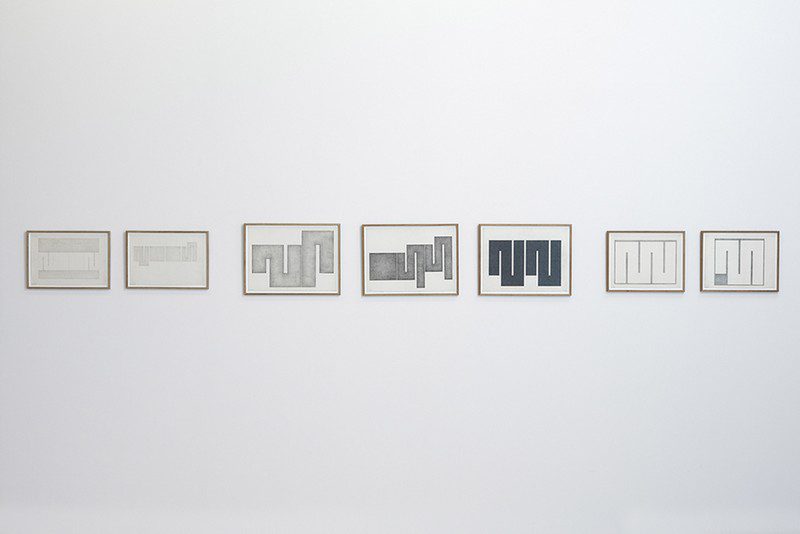ART-PRESENTATION:The meander is a form of my freedom
In 1960 the first meander-painting was created by Julije Knifer and with it he discovers the ideal form of expression for his ‘anti-painting’. By using monotone rhythms and the intense contrasts of black and white, he resisted the criteria of the modernity. Knifer used this consciously chosen formal expression, from 1960 until his death in 2004. He himself defined it as “non-development”, as the concept for the elimination of any kind of development under the principal of the repetition of an almost identical motif.
By Efi Michalarou
Photo: Galerie Frank Elbaz
Julije Knifer (23/4/24-7/12/2004), was a Croatian abstract painter and a founding member of the 1960s Croatian art collective known as the Gorgona Group. Before adopting the concept of meander, there were two types of processes in Julije Knifer’s artistic approach. The first was the repetition of a single pattern, indefinitely varied: between 1949 and 1952 Knifer daily drew his self-portrait in the same format. Which, according to Zvonko Makoviç, he began to see as “An endless series of the same or almost the same rhythmical shifts”. The second was the reduction of pictorial means, from 1952 in a series of landscapes of Stenjevec (one of the districts of Zagreb), his language becomes more and more bare. That way, he aspired to create some form of anti-painting. It was around 1959-60 that he reduced his pictorial means almost exclusively to the contrast between black and white and the composition of vertical and horizontal lines. With the meander, the two processes, the variation of a single motif and the reduction of means of expression, are associated. Although at that time we would have thought he had finished his artistic research, he was just starting. It was then that the meander became his distinctive sign, his self-portrait. By varying the relationship between the black and white areas, Knifer is able to calibrate a different dance between solid and void, dark and light. At the same time, the size and placement of the “meander” within the painting’s horizontal or vertical rectangle registers the pressure of the form against the physical boundaries. For all of Knifer’s emphasis on the vertical and horizontal, his “meander” never sits comfortably within the painting’s rectangle. The drawings of the 70s were no longer only preparatory drawings. Knifer was particularly interested in variations of surfaces ranging from very pale gray, made with very hard pencils, to very deep blacks made with soft pencils. This exhibition, is important for a variety of reasons. It challenges the narcissistic viewpoint that with Minimalism and Pop Art, it was all happening in America. It disputes the view of Modernism that believes in progress, while suggesting that abstract art needn’t be only about itself and two-dimensionality.
Info: The meander is a form of my freedom, Curating: Zarko Vijatovic, Galerie Frank Elbaz, 66 rue de Turenne, Paris, Duration: 23/5-31/7/15, Days & Hours: Tue-Sat: 11:00-19:00, http://galeriefrankelbaz.com


